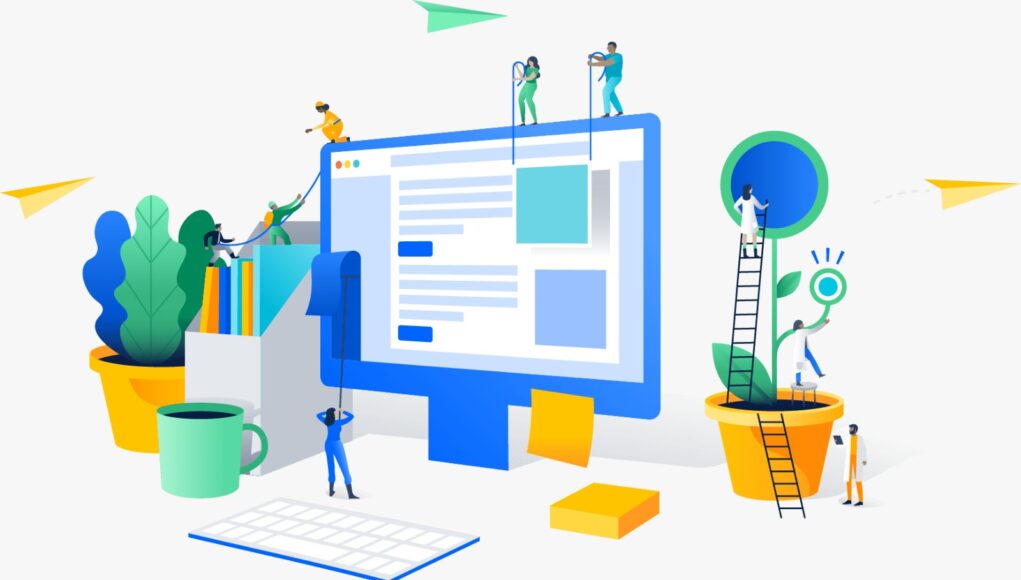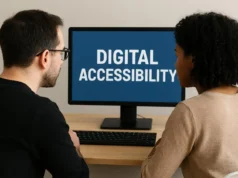Businesses and organisations continuously strive to offer users seamless interactions, personalized content, and easy navigation. One powerful way to achieve this is through web portal development services. By integrating diverse services and resources into a single, unified platform, web portals provide users with a more focused, personalized, and efficient experience.
But what exactly is a web portal, and how does it differ from a regular website? How can developing a custom web portal boost user engagement, and what should you expect in terms of cost? Let’s explore these questions in detail.
What Exactly is a Web Portal?
A web portal is a website that is designed to provide a unified interface for a user to access various services and information from other sources such as e-mail, newsgroups, and web search engines. Unlike standard websites, which generally provide static details and content, web portals offer dynamic content personalized to users’ needs. They serve as gateways, providing access to multiple information and services through a single entry point.
For example, a corporate web portal may provide employees access to HR services, internal communication tools, company news, and project management resources, all accessible through one login. Web portals can also cater to customers, providing personalized content, support, and e-commerce services.
The Main Difference Between Web Portals and Websites
While both web portals and websites exist in the online realm, they serve distinct purposes and offer different functionalities:
- Content Personalization: Websites typically offer static content, while web portals deliver personalized content based on the user’s preferences and behaviour. For instance, a user on an e-commerce portal might see personalized product recommendations.
- User Interaction: Websites are often designed for one-way communication, providing information to the user. In contrast, web portals encourage two-way interactions, allowing users to engage with various services, applications, or community features.
- Access to Resources: A website is generally open to all users. At the same time, a web portal usually requires users to log in and offers access to resources based on their user profile. This means portals often have layered access control, making them more secure.
Different Types of Web Portal Development
Web portal development can be tailored to meet specific business needs, and there are several types of portals depending on their purpose:
- Corporate Portals: These are designed to manage internal communications, resources, and workflows. Employees can access HR information, company announcements, and collaborative tools through one interface.
- Customer Portals: These portals allow businesses to offer personalized services to their customers, such as order tracking, support ticket management, and product recommendations. They enhance the customer experience by providing easy access to relevant information and services.
- E-commerce Portals: E-commerce portals are the web applications that are used for buying and selling of products and services online and they contain features like product list, shopping cart and payment options. They can be customized to include personalized product suggestions and promotions based on the user’s shopping behaviour by E-commerce web development.
- Community Portals: Community portals unite people around a common interest. These portals often include discussion forums, user-generated content, and social networking features.
- Learning Portals: These portals provide educational resources and learning management systems for students and professionals. Users can access courses, track their progress, and participate in online discussions.
Step-by-Step Custom Web Portal Development Process
Creating a custom web portal involves several important steps:
- Requirement Analysis: The first step is gathering and analysing the stakeholders’ requirements. This involves understanding the target audience, the types of services to be offered, and the overall goals of the portal.
- Planning: The next step is to develop a detailed plan once the requirements are well understood. This includes defining the portal’s architecture, selecting the appropriate technologies, and outlining the development timeline.
- Design: The design phase involves creating a user-friendly interface that aligns with the brand’s identity. The portal’s design should focus on ease of navigation, accessibility, and visual appeal.
- Development: During the development phase, developers begin coding the portal’s features, integrating databases, and ensuring the portal is responsive across different devices.
- Testing: The portal is thoroughly tested for bugs or issues before it goes live in order to identify and fix any issues. This includes testing for security vulnerabilities, performance issues, and usability.
- Deployment: After testing, the portal is deployed on the server and accessible to users. This step also involves setting up monitoring tools to track the portal’s performance and user engagement.
- Maintenance and Updates: Web portals require ongoing maintenance to ensure they remain secure, up-to-date, and relevant to users. Some of the possible updates may be the addition of new features, enhancements of existing features, and compatibility with the current technologies.
How Much Does Bespoke Web Portal Development Cost?
The cost of bespoke web portal development varies significantly based on complexity, features, and the technologies used. A simple primary custom web portal may cost as low as $10,000 while a complex one may cost between $50,000 to $200,000 or even more.
Several elements contribute to the overall cost:
- Features and Functionality: The more features and integrations a portal requires, the higher the development cost. For example, integrating a secure payment gateway or a complex CRM system will add to the expenses.
- Design Complexity: Custom designs tailored to a specific brand’s identity can increase costs, especially if they require extensive user interface and user experience work.
- Development Time: The time required to develop the portal directly affects the cost. Shorter timelines may require more developers or longer working hours, increasing the price.
- Ongoing Maintenance: Once the portal is developed, there is need to constantly maintain and update the portal in order to ensure that it is running efficiently. This includes fixing bugs, updating software, and adding new features.
Conclusion
Investing in web development is a strategic move that can significantly improve user interactions, streamline business processes, and enhance customer satisfaction. Whether you need a corporate, customer, or e-commerce portal, the benefits of a well-developed portal are substantial.
At Itchimes, a leading software development company, we create bespoke web portals that align with your business goals and user needs. Our expert team ensures that your portal is functional but also scalable and secure. Ready to transform your digital presence? Contact us today to learn more about our web portal development services.
Frequently Asked Questions
1. What is the difference between a web portal and a website?
A web portal offers personalized and interactive content based on user preferences, while a website typically provides static information without personalized interaction.
2. How long does it take to develop a custom web portal?
The time taken to develop the portal depends on its complexity. A basic portal may take a few months to build, while a more complex one may take six months or more.
3. What are the benefits of web portal development?
Web portals offer numerous benefits, including improved user engagement, personalized content, enhanced security, and streamlined business processes.
4. Can I integrate my existing systems with a new web portal?
Custom web portals can be integrated with existing systems such as CRM, ERP, and other third-party services to ensure seamless operations.
5. How can I ensure the security of my web portal?
The safety and integrity of your web portal can be safeguarded by implementing security measures like encryption, secure login procedures, frequent updates, and vulnerability testing.
We welcome the readers to write for us






